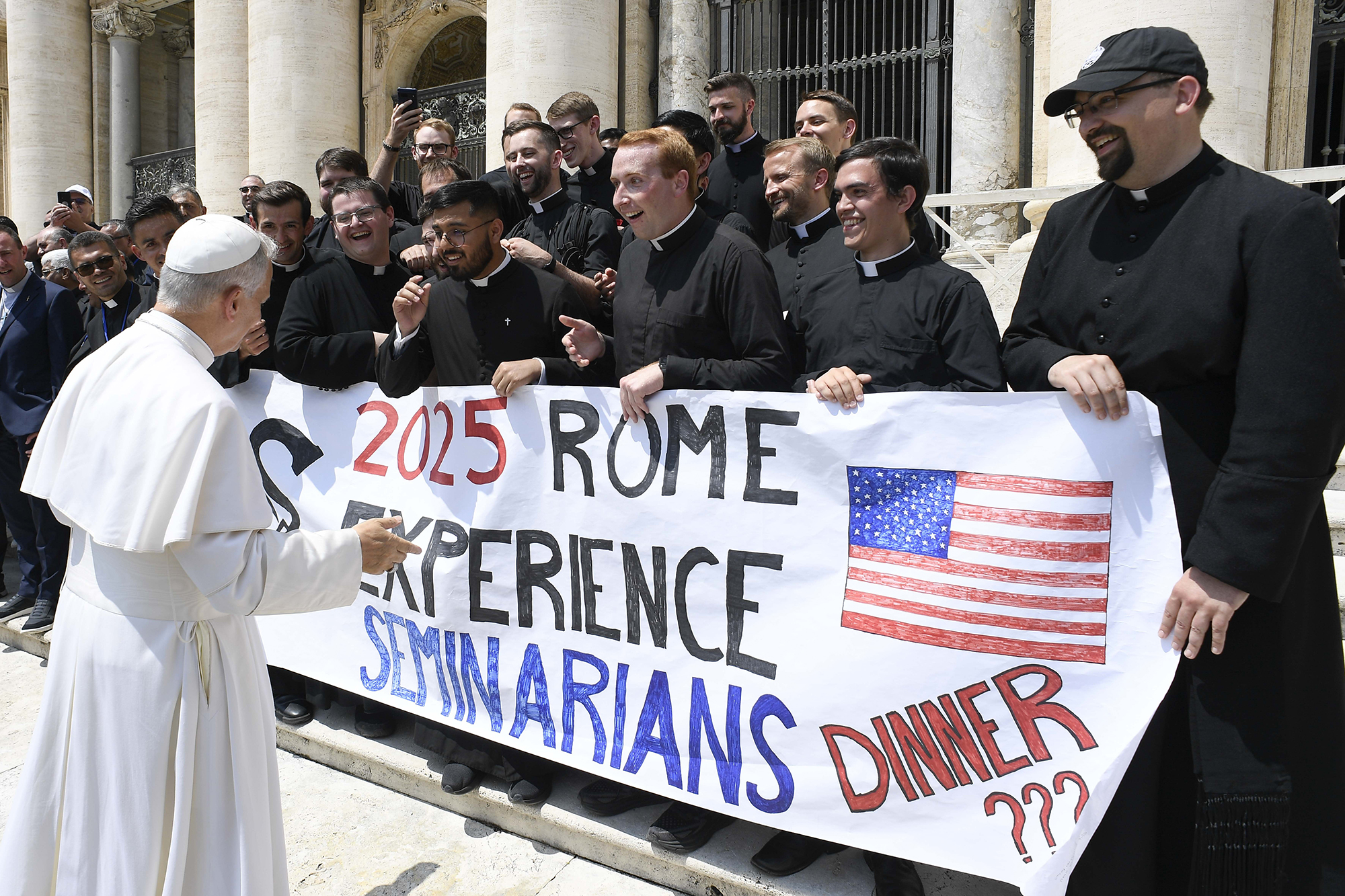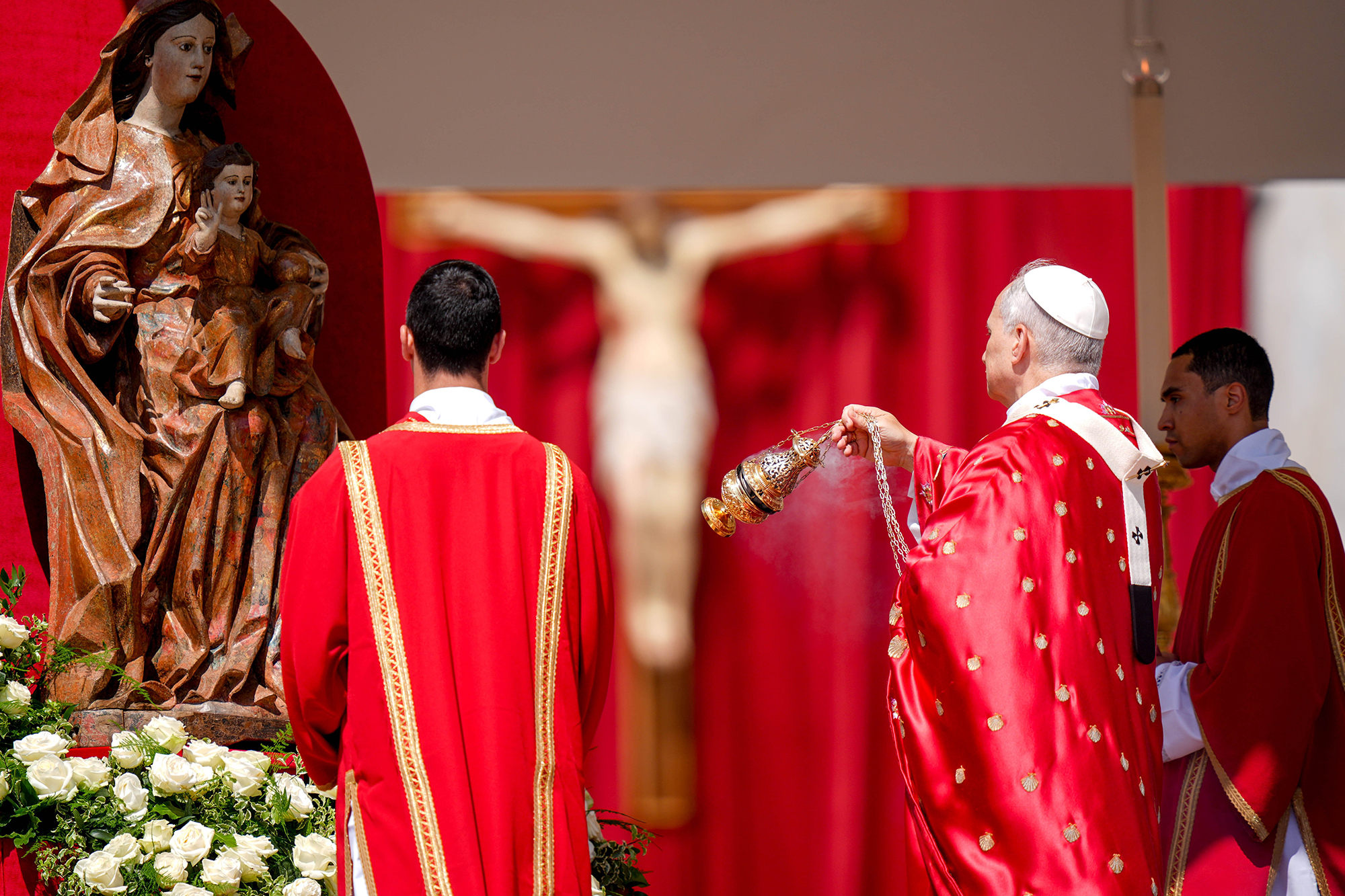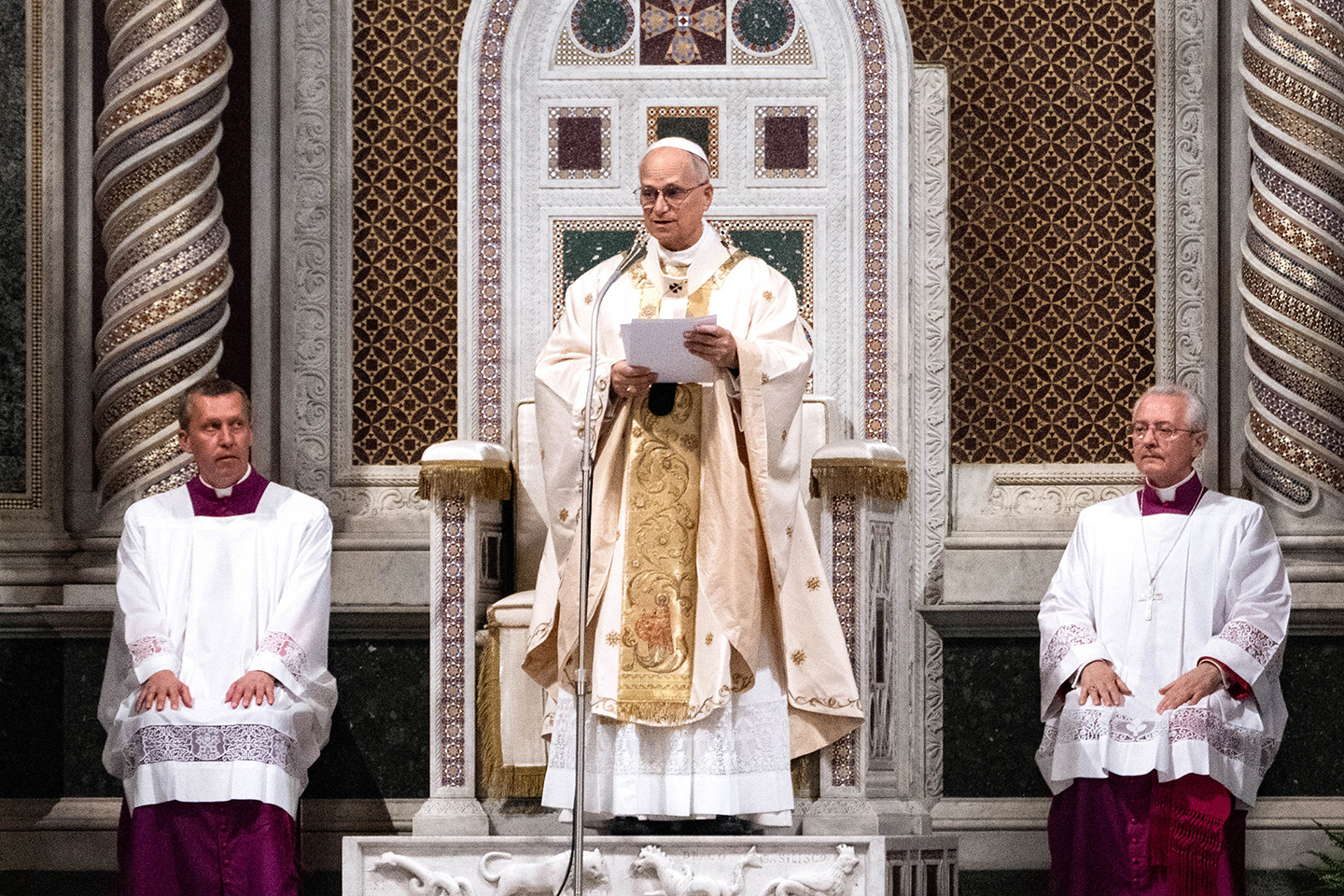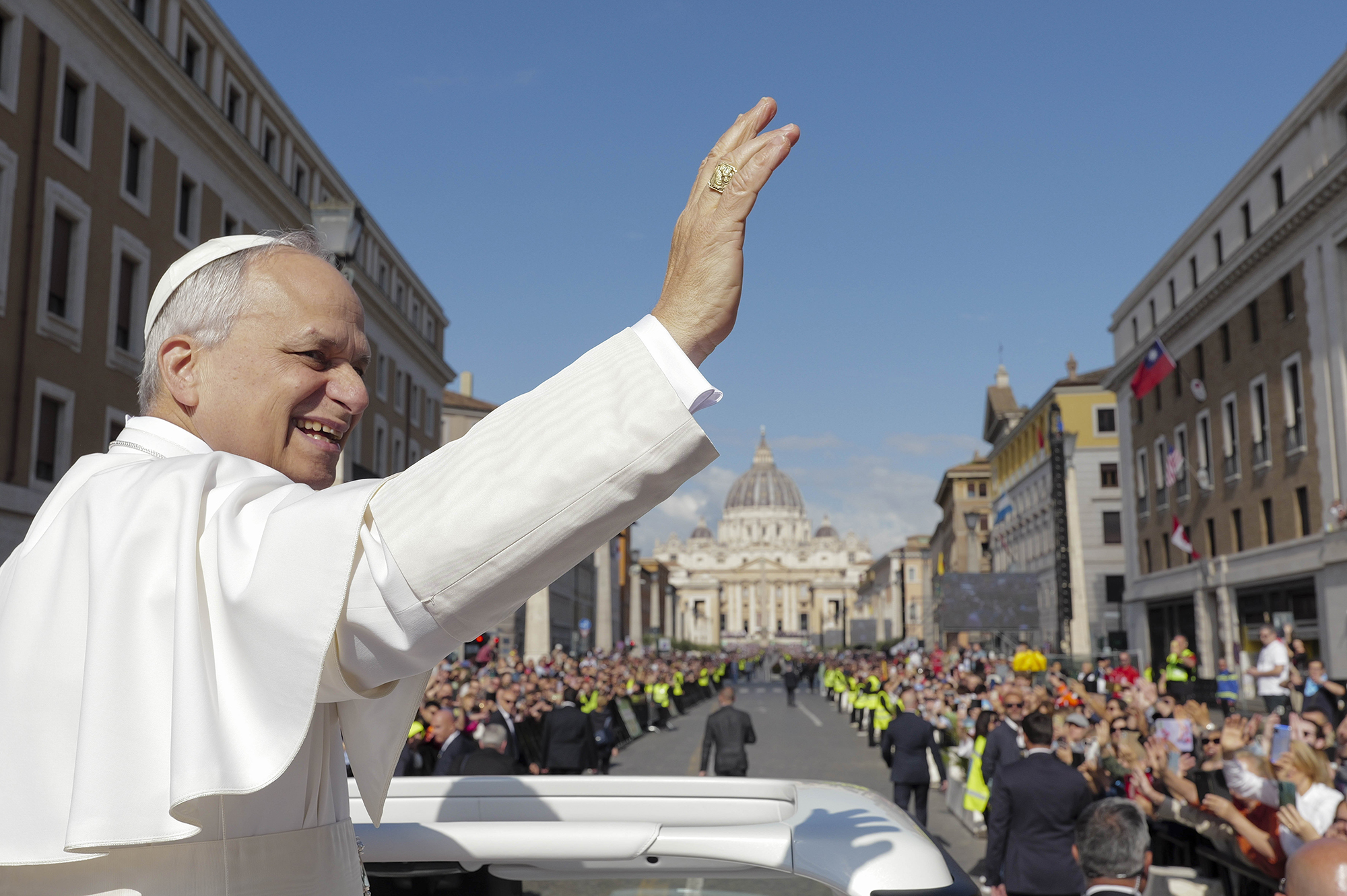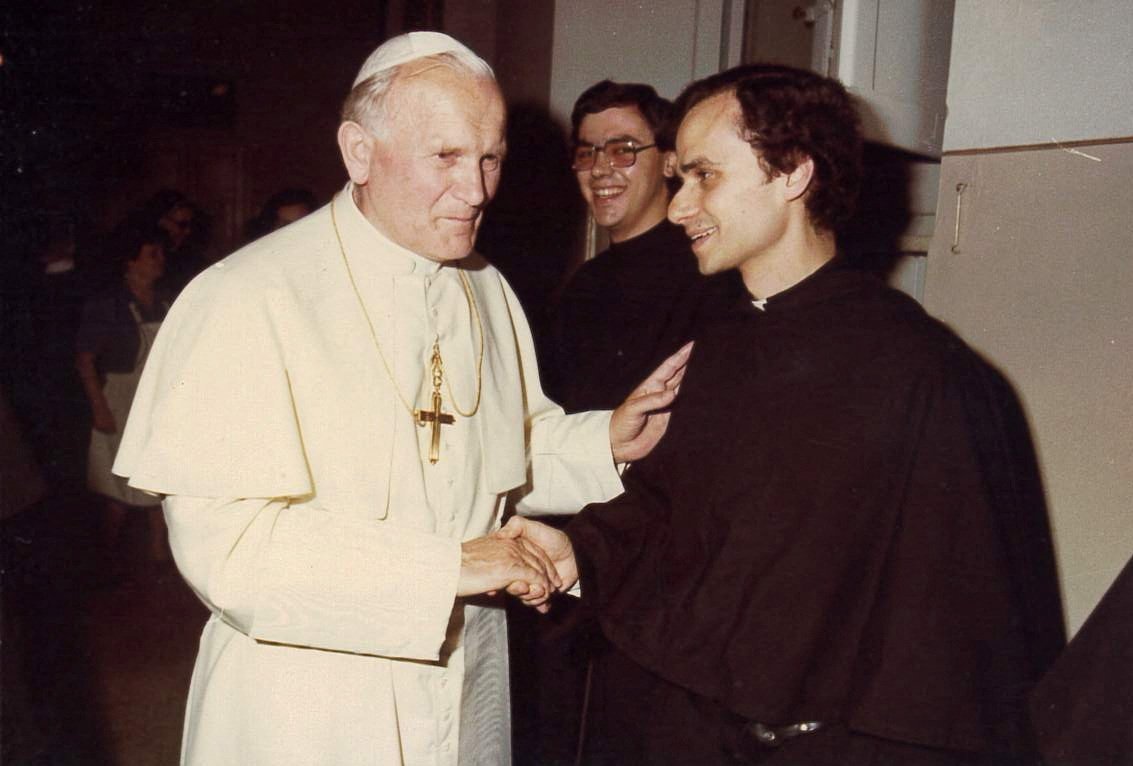Calling on the Holy Spirit and all the saints, cardinals begin conclave
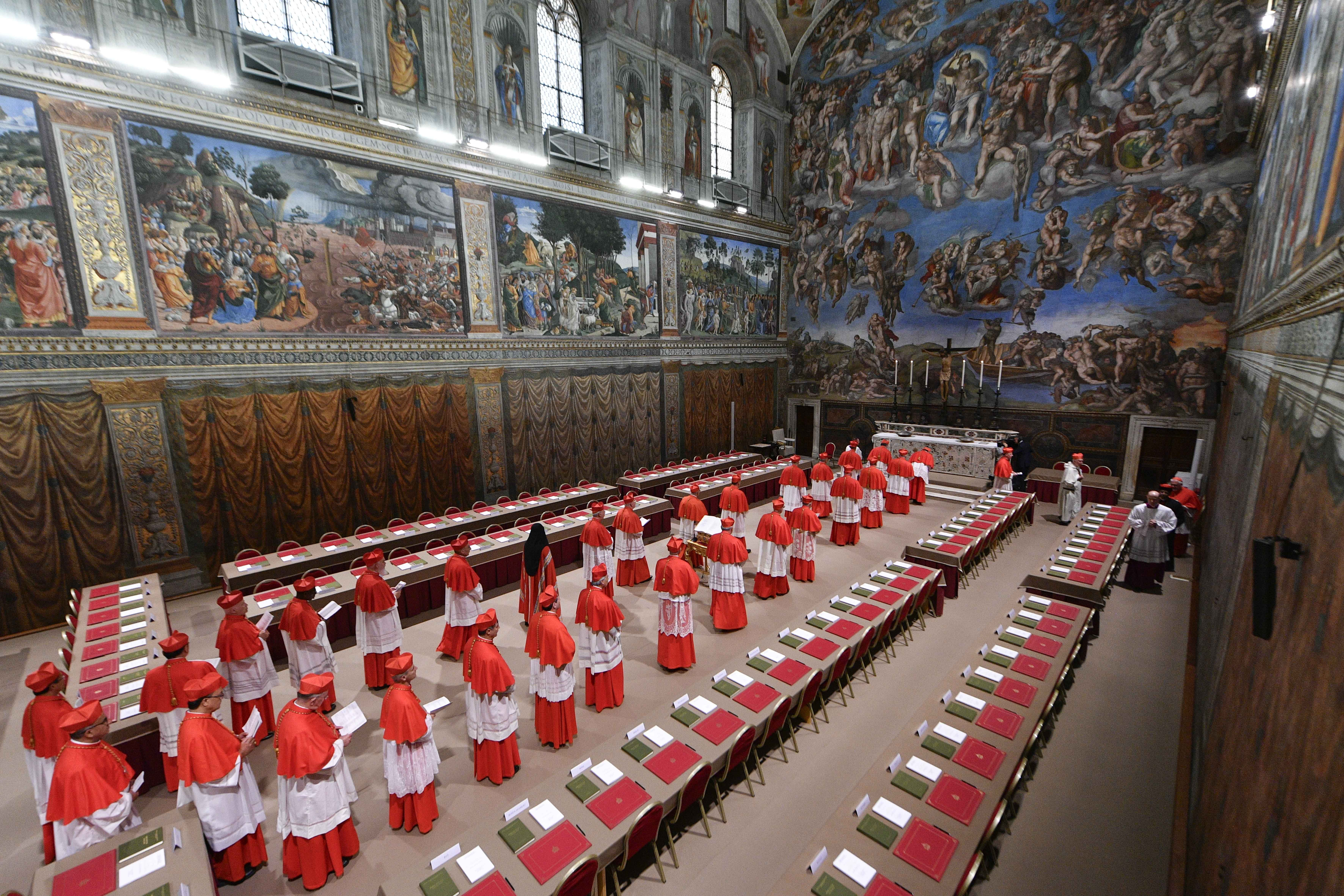
Later in the day, the first vote of the conclave failed to elect a pope.
VATICAN CITY — Invoking the help of the Holy Spirit and recognizing that millions of people all over the world were praying for them, 133 cardinals entered the Sistine Chapel with a singular goal: to elect “a worthy pastor” for the universal Church.
Italian Cardinal Pietro Parolin, the top-ranking cardinal among the electors, led the cardinals in prayer at 4:30 p.m. May 7 in the Apostolic Palace’s Pauline Chapel, just a short distance from the Sistine Chapel.
“The whole Church, united with us in prayer, insistently invokes the grace of the Holy Spirit so that a worthy pastor for the whole flock of Christ would be elected by us,” he told them.
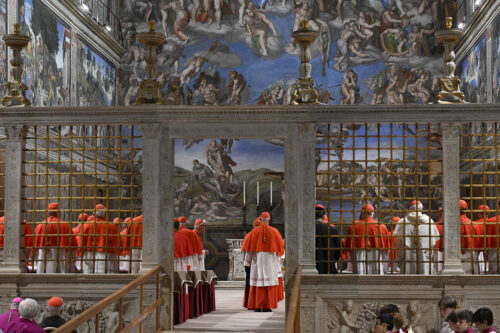
Cardinal Pietro Parolin stood before a Book of the Gospels as cardinals processed into the Sistine Chapel before the conclave to elect a new pope begins at the Vatican May 7.
“May the Lord direct our steps on the path of truth so that, through the intercession of the Blessed Virgin Mary, the holy apostles Peter and Paul and all the saints, we may always do what is pleasing to Him,” the cardinal prayed.
Only cardinals under the age of 80 were eligible to enter the conclave, but it still was the largest group of cardinal electors ever assembled. In 1975, St. Paul VI set a limit of 120 cardinal electors and ruled that cardinals over the age of 80 could not enter a conclave. When he died in 1978, 111 cardinals elected Pope John Paul I; there also were 111 electors at the 1978 conclave that chose St. John Paul II. After he died in 2005, 115 electors chose Pope Benedict XVI and when he resigned in 2013, there also were 115 cardinals in the conclave that elected Pope Francis.
The cardinal electors began their walk to the Sistine Chapel chanting the Litany of Saints, which started with prayers that God would have pity on them. They then invoked the saints, archangels and ancient biblical prophets to pray for them. They pleaded for the aid of Christ, asking for His mercy and protection. They also prayed for those who have died and those threatened by hunger and war.
The cardinals asked God to give the world peace, to “comfort and enlighten” the Church, help Christians reconcile with each other and to lead all people to the truth of the Gospel.
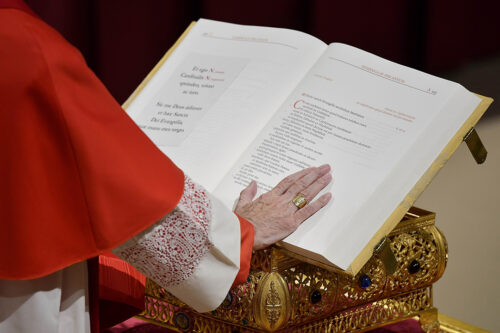
A cardinal placed his hand on the Book of the Gospels as he solemnly swore to follow the rules of the conclave and to keep secret everything that happens inside.
Once in the chapel, they called on the help of the Holy Spirit by singing the ancient hymn, “Veni Creator Spiritus” (“Come, Creator Spirit”).
Then the cardinals from more than 70 countries vowed that, if elected pope, they would faithfully fulfill the ministry of universal pastor of the church and would defend the rights and freedom of the Holy See.
They also solemnly swore to scrupulously follow the rules for the election of a pope and keep secret the results of the votes, unless they have express permission from the new pope to reveal details.
After reciting the oath together, each cardinal walked up to the Book of the Gospels, put his right hand on it, said his name and sealed his oath, “So help me God and these holy Gospels that I touch with my hand.”
The Book of the Gospels was open to the page with Matthew 4:12-23, which recounts Jesus calling His first disciples.
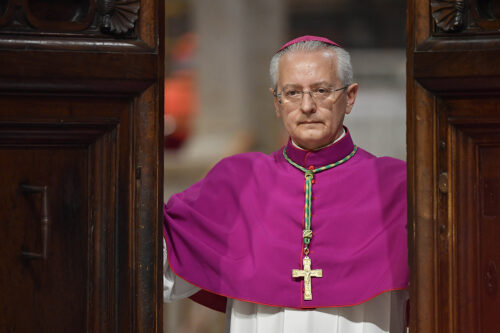
Archbishop Diego Ravelli, Vatican master of ceremonies, closed the doors to the Sistine Chapel at the Vatican after proclaiming “extra omnes” (“everyone out”) at the beginning of the conclave to elect a new pope May 7.
Cardinal Parolin took the oath first, followed by the cardinals in order of rank, ending with Cardinal Koovakad.
The portion broadcast by Vatican Media ended with Archbishop Diego Ravelli, master of papal liturgical ceremonies, saying, “Extra omnes,” ordering out everyone not authorized to remain. The ceremony lasted about 75 minutes.
Ten U.S. cardinals were among those filing into the Sistine Chapel: Cardinals Raymond L. Burke, retired prefect of the Apostolic Signature; Blase J. Cupich of Chicago; Daniel N. DiNardo, retired archbishop of Galveston-Houston; Timothy M. Dolan of New York; Kevin J. Farrell, prefect of the Dicastery for Laity, the Family and Life under Pope Francis; Wilton D. Gregory, retired archbishop of Washington; James M. Harvey, archpriest of Rome’s Basilica of St. Paul Outside the Walls; Robert W. McElroy of Washington; Robert F. Prevost, prefect of the Dicastery for Bishops under Pope Francis; and Joseph W. Tobin of Newark, New Jersey.
First vote, first black smoke
As expected, the 133 cardinals who entered the Sistine Chapel May 7 failed to elect the next pope on their first ballot.
After celebrating Mass for the election of a pope, processing into the Sistine Chapel and swearing a solemn oath of perpetual secrecy on the conclave proceedings, the cardinal electors cast their first ballot in the conclave.
The ballot, however, failed to reach the two-thirds supermajority, or 89 votes, that is required for a new pope to be elected. With the largest number of cardinal electors ever to vote in a conclave, and therefore the most votes to count, the black smoke arrived two hours later than the expected 7 p.m. Rome time.
Only one ballot was cast on the first day of the conclave. On following days, up to four ballots are cast each day. If, after three days of voting, they have not elected anyone, the cardinals can take a maximum on one day for prayer and informal discussion.
An estimated 30,000 people gathered in St. Peter’s Square the first evening of the conclave even though they did not expect to see white smoke emerging from a chimney on top of the Sistine Chapel, signaling that a pope had been elected.

